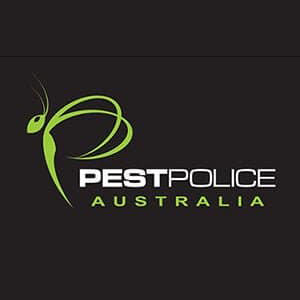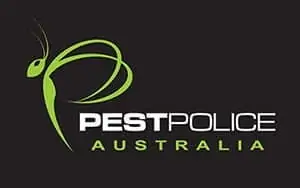Pest control is an essential aspect of maintaining a healthy and safe environment, whether in residential, commercial, or agricultural settings. The presence of pests not only poses risks to property but also threatens human health and well-being. In the battle against pests, assessments play a pivotal role in developing effective and targeted pest control strategies. Let’s explore the importance of assessments for effective pest control.
Understanding the Need for Pest Control Assessments
Pest infestations pose a myriad of risks, ranging from structural damage to potential health hazards. In the ongoing battle against pests, understanding the need for comprehensive pest control assessments is crucial. This section delves into the reasons why assessments are a fundamental component in addressing the challenges posed by pests.
A. Risks Associated with Pest Infestations
- Structural Damage: Pests, such as termites and rodents, can cause significant damage to structures over time. They may compromise the integrity of buildings, leading to costly repairs and potential safety hazards.
- Crop Losses: In agriculture, pests can devastate crops, resulting in reduced yields and economic losses. Effective pest control assessments in farming operations are essential to ensure food security and sustainable agricultural practices.
- Health Concerns: Certain pests are vectors for diseases, posing a direct threat to human and animal health. Mosquitoes, for example, can transmit diseases like malaria, dengue, and Zika virus. Assessments help identify and mitigate these health risks.
- Allergies and Respiratory Issues: Pests like cockroaches and dust mites can trigger allergies and respiratory problems. Assessments focus on identifying the sources of these allergens, allowing for targeted control measures.
B. Economic Impact on Businesses and Households
- Property Devaluation: Pest infestations can lead to the devaluation of properties. The presence of pests can deter potential buyers or tenants, impacting the overall value of real estate.
- Business Disruption: For commercial establishments, pest problems can disrupt daily operations. Closure due to pest-related issues can result in financial losses and damage the reputation of businesses.
- Food Industry Concerns: In the food industry, pest contamination can lead to product recalls, financial losses, and damage to brand reputation. Assessments are vital to maintaining the hygiene and safety standards necessary for food production.
- Increased Expenditure: Dealing with pest infestations often involves additional expenses, such as pest control services and property repairs. Assessments help in proactively managing these costs by preventing extensive damage.
C. Health Concerns Related to Pests
- Vector-Borne Diseases: Pests like ticks, fleas, and mosquitoes are known vectors for various diseases. Assessments focus on identifying and eliminating breeding grounds, reducing the risk of disease transmission.
- Indoor Air Quality: Pests like cockroaches and rodents can compromise indoor air quality by producing allergens. Assessments target areas where these pests thrive, improving the overall health of indoor environments.
- Contamination of Food and Water: Pests can contaminate food and water sources, leading to foodborne illnesses. Assessments in residential and commercial kitchens are essential to prevent contamination and ensure food safety.
Understanding the need for pest control assessments goes beyond addressing visible pest issues. It involves a proactive approach to mitigate potential risks, protect property and health, and sustain a safe and habitable environment.
The Role of Assessments in Pest Control
The role of assessments in pest control is multifaceted and crucial to the development and implementation of effective pest management strategies. Assessments provide a systematic and thorough examination of the pest-related risks and conditions in a given environment. Here are key aspects that highlight the significant role of assessments in pest control:
Early Detection and Prevention
Assessments are crucial for early detection of pest issues, enabling prompt intervention to prevent the establishment of infestations. Conducting routine assessments empowers pest control professionals to proactively identify potential risk factors and vulnerabilities, ensuring a swift and targeted response to mitigate pest-related challenges.
Customised Pest Management Plans
Every pest situation is unique, and assessments are crucial for customising management plans to meet specific environmental needs. Professionals develop accurate and effective control techniques after learning about the intricacies of the infestation. Assessments provide valuable insights into the types of pests, the extent of the infestation, and the environmental factors contributing to pest proliferation.
Identification of Pest Species
Assessments entail identifying the particular pest species in a given setting. Accurate identification is pivotal as diverse pests necessitate distinct control methods, ensuring the implementation of the most effective measures. Understanding the behaviour, life cycle, and habitat preferences of the identified pest species is equally essential, guiding the development of appropriate and targeted control strategies.
Risk Assessment
Assessments encompass a comprehensive risk evaluation, examining potential threats pests pose to human health, property, and the environment. This thorough assessment is pivotal in prioritising control measures and ensuring a targeted response to identified risks. By understanding the specific level of risk associated with a particular pest infestation, resources can be allocated strategically to address areas requiring immediate attention, enhancing the efficiency and effectiveness of pest control efforts.
Environmental Assessments
Integral to effective pest control is the careful consideration of environmental factors. Assessments play a crucial role in pinpointing conditions contributing to pest problems, such as water sources, waste disposal, or structural vulnerabilities. Through environmental assessments, pest control professionals can then enact measures that not only minimise the impact on non-target organisms but also uphold ecological balance.
Monitoring and Evaluation
Assessments involve continuous monitoring and evaluation. Regular follow-ups track the effectiveness of control measures, allowing for necessary adjustments. Monitoring is essential for detecting pest resurgence and identifying new factors, ensuring a proactive and adaptive approach to pest control.
Compliance with Regulations
Adherence to pest control regulations and standards in specific industries and regions is ensured through assessments, aiding businesses and individuals in avoiding legal complications and potential fines. In essence, assessments serve as the cornerstone of successful pest control efforts by furnishing essential information to develop targeted strategies, enabling the sustainable and efficient prevention and management of pest issues.
Challenges and Solutions in Pest Control Assessments
Effective pest control is critical to maintaining healthy environments and safeguarding property. Thorough assessments are indispensable to develop targeted and sustainable pest management strategies. However, pest control assessments face various challenges, from incomplete information to the dynamic nature of environmental factors.
Let’s explore both the challenges encountered in pest control assessments and innovative solutions that contribute to overcoming these obstacles.
Challenges in Pest Control Assessments
- Incomplete Information: It can be challenging to obtain comprehensive data about a pest infestation, including its extent and underlying causes. Incomplete information may hinder the development of effective control strategies.
- Dynamic Environmental Factors: Environmental conditions, such as weather patterns and ecological changes, can influence pest behaviour. The dynamic nature of these factors poses challenges in accurately predicting and assessing pest risks over time.
- Resource Limitations: Limited financial and human resources may impede the frequency and thoroughness of assessments. This constraint can hinder the ability to conduct regular and detailed evaluations needed for effective pest control.
- Rapid Pest Adaptation: Pests can adapt quickly to control measures, reducing the efficacy of established strategies. This adaptability may lead to the resurgence of pest populations, requiring constant adjustments to control methods.
Solutions to Address Challenges
- Integrated Pest Management (IPM): Implementing an integrated approach that combines biological, chemical, and cultural control methods allows for a more holistic understanding of pest dynamics. IPM emphasises continuous monitoring and adapts strategies based on assessment results.
- Advanced Technologies: Utilising technologies such as remote sensing, data analytics, and smart monitoring devices can enhance the accuracy and efficiency of assessments. These tools provide real-time data and aid in overcoming limitations associated with resource constraints.
- Training and Education: Providing ongoing training for pest control professionals ensures that they stay informed about the latest assessment techniques and technologies. Well-trained personnel are better equipped to navigate challenges and adapt to evolving pest control needs.
- Collaboration and Information Sharing: Establishing partnerships and fostering collaboration between pest control professionals, researchers, and regulatory bodies can facilitate information sharing. This collaboration enhances the collective understanding of pest behaviour and management strategies.
- Public Awareness: Educating the public about the importance of reporting pest issues and cooperating with assessments encourages community involvement. Increased awareness can lead to more comprehensive data collection and a better understanding of local pest dynamics.
Addressing challenges in pest control assessments requires a multifaceted and adaptive approach. By embracing technological advancements, promoting collaboration, and emphasising ongoing education, the pest control industry can enhance its ability to assess, manage, and mitigate pest-related challenges effectively.
Conclusion
The importance of pest assessments in achieving effective pest control cannot be overstated. A comprehensive understanding of the pest at hand, coupled with insights into the extent of the infestation, forms the bedrock of successful treatment strategies. Even when the specific pest is identified, assessments offer invaluable information on the spread of the infestation, enabling a thorough and targeted treatment approach. For the pest relief you need and a pest-free environment, Pest Police stands ready to implement strategic and effective pest control measures. Take the first step towards a pest-free space—contact us today for expert assessments and tailored solutions.

